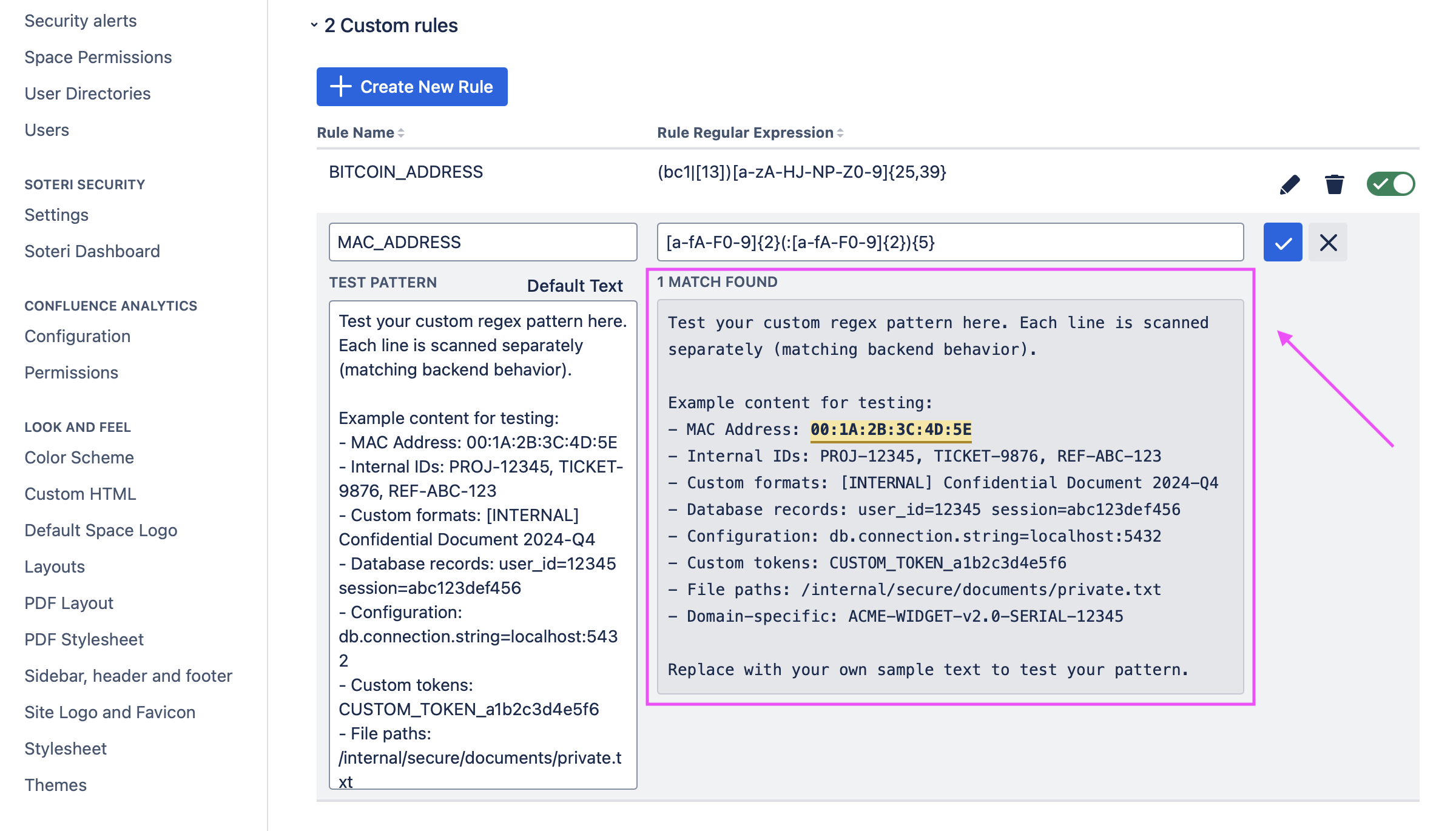Defining Custom Detection Rules
Security for Confluence allows you to create custom scanning rules using regular expressions. You can create and edit custom rules from the Settings page, under “Custom rules”:

Only Confluence administrators and any user granted explicit app access can access these settings.
Security for Confluence imposes limits on how much memory a rule can use and how long a rule can take to scan a page fragment. Scanning rules which exceed these limits will be automatically disabled, and the scan will be marked as failed.
If a secret in a single page fragment matches more than one rule (built-in or custom), only the first match will be reported.
Developing custom rules
Our application uses the built-in JDK java regex library (Java 8). The supported regex constructs are documented here.
When creating or modifying a custom regex rule, a preview of matches that would be caught by a scan will be shown.

Example custom rules
Bitcoin Address
^[13][a-km-zA-HJ-NP-Z0-9]{26,33}$ Youtube Links
<a\s+(?:[^>]*)href=\"((?:https|http):\/\/\w{0,3}.youtube+\.\w{2,3}\/watch\?v=[\w-]{11})">(?:.*?)<\/a>Auditing changes to custom rules
All custom rule creation, deletion, and updates (including enabling/disabling), are logged to the Confluence Audit log. See Viewing Audited Events for more information.
